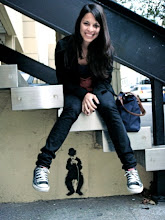
It might not seem completely suitable to classify Butch Cassidy and the Sundance Kid as a pure Western film given its shades of irony and comedy and criticism of society. In fact, the genre was adapted and molded to better fit the audience of its time. It depicts the American West under an unexpected light because it translates the viewers’ realities and anxieties into the typical story of the outlaw cowboys. American’s fear to enter an unavoidable period of severe economic distress was the blueprint for the protagonists’ quest to escape from a force that seemed impossible to deceive.
Throughout the film, the protagonists question their way of life. They realize that no matter how far they run, justice and the law are chasing after them and aiming for their lives. After such an identity crisis, Butch and Sundance decide to go straight and start earning money the honorable way. The juxtaposition of opposite realms set forth by this film, especially from this moment on, are interesting to notice. While the audience comes to believe that Butch and Sundance are callous to danger because they were constantly involved in armed robberies, their actual uneasiness when having to work is a shocking reality. It is unexpected to realize that they were scared to be robbed by local bandits when coming back from the bank. As legendary outlaws, one would think they could defend themselves from an ambush. However, it is even more perplexing when Butch, faced with the Bolivian bandits, immersed in a panic attack confesses that he has never killed a person before. He tries to convince the Bolivians to leave, imploring them as his last resource to avoid killing them. However, such pleading do not have the desired effect, and they end up shooting at each other. The killing scene is shot in slow motion, showing the bandits bodies falling and contorting in an unnatural way while an excruciating scream overshadows every sound to then dissolve with the wind. This is the first time that regret crosses Butch and Sundance’s face.
Even though it is common in the western genre that the “hero stands between […] two thematic poles” (Bordwell, 338) such as good and bad, law and outlaw, civilization and savagery, this equation had a particular twist in Butch Cassidy and the Sundance Kid. Butch and Sundance did not decide to join the forces of order out of remorse, but rather as a way to trick the police who was following their steps. However, the key difference between this film and the rest of its genre is revealed after Butch and Sundance killed the Bolivian bandits. Sundance breaks the deafening silence by saying “well, we’ve gone straight. What do we try now?.” This line is followed by a despair conversation in which they come to the conclusion that there is no other path of life different than robbing banks. “It seems that the drifting cowboy is condemned to live outside civilization because he cannot tame his grief and hatred” (Bordwell, 339).
This sequence is a bitter and stinging criticism to society. Citizens are forced to become killers when they abide by society’s norms, which might be the main reason why outlaws such as Butch and Sundance were liked, praised, and admired by the media and the society. They represented not only a legend and a dream, but also a promise of freedom, breaking loose, and living without absurd obligations.
Butch Cassidy and the Sundance Kid is the perfect example of the western genre’s evolution across history. The general guidelines of the genre were modified in order to better fit its time and its audience’s concerns. For example, it is worth noticing that the use of costumes as building blocks for the characters’ personalities and story line is a diversion from the norm of the genre. In most western films, the costumes are generally standard, and thus, they do not take on any particular meaning. However, in Butch Cassidy and the Sundance Kid “costume is ichnographically significant” (Bordwell, 338). In fact, George Roy Hill cleverly uses hats as objects that are the outer representations of what the person wearing them is feeling. For example, when Butch is especially happy and joking, such as during the bicycle ride with Etta, he is no longer wearing a cowboy hat but rather a bowler hat that resembles Charlie Chaplin’s style. In addition, hats take on a protagonist role by drastically changing the path of the story. After spotting a white hat from a crowd in Bolivia, which was the distinguishing mark of the person chasing Butch and Sundance in America, they decide to abandon their lives as robbers and began working to earn a living.
In addition, among the elements that can be identified as a mutation from the original western genre is the composition of the dialogues. Even during the most sober scenes, dark comedy and irony are constantly present, which was a recurring characteristic of this period’s films, no matter the genre. The elements of laughter and jokes became coping mechanisms to make situations lighter and bearable for both the protagonists and the audiences. By integrating in the film slices of its audiences’ realities, Butch Cassidy and the Sundance Kid passes from been a simple story to escape from the routinely concerns to an encoded criticism of its time.

No comments:
Post a Comment